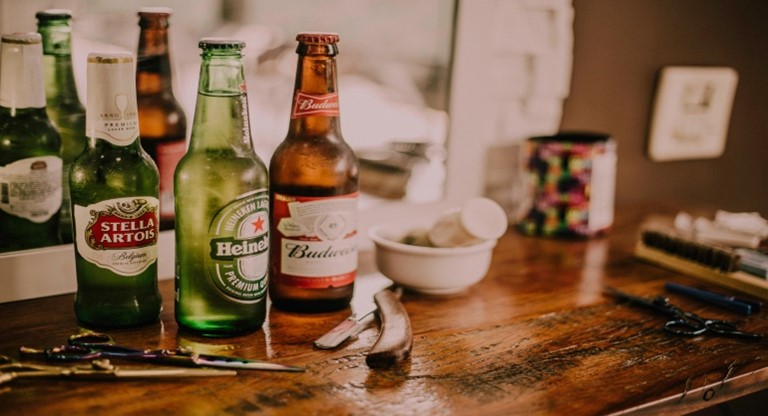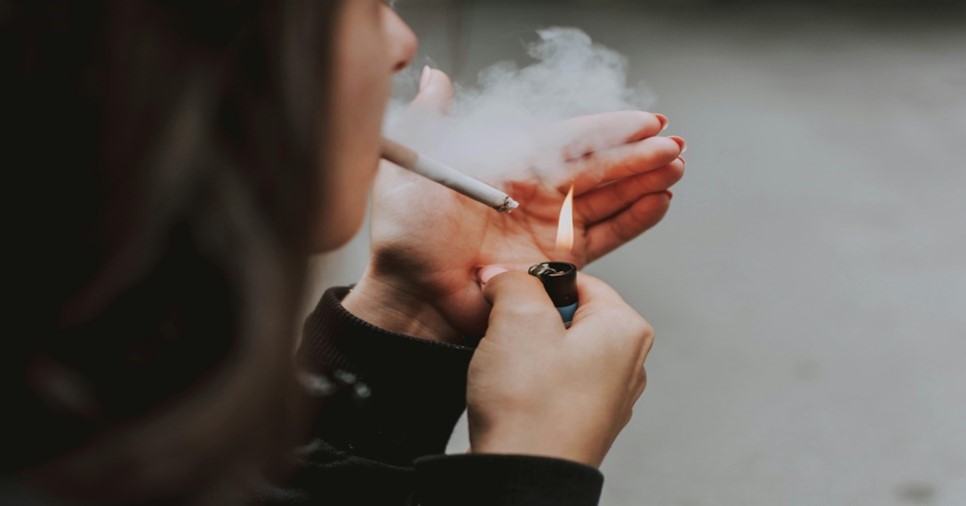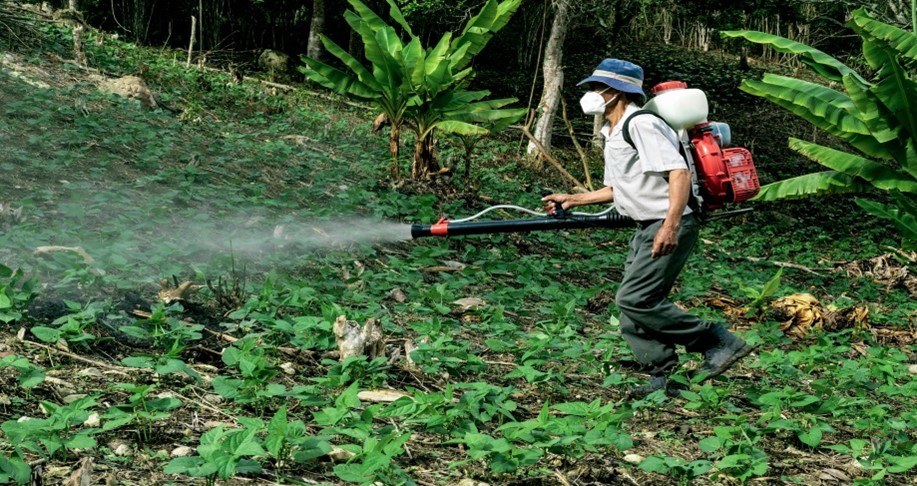Lowering Cancer Risk
Anything that can raise your chances of developing cancer is called a cancer risk factor. Certain risk factors, such as your age and genetic makeup, are unchangeable. Others, though, you can alter, like living an active and healthy life. Following are the factors which can cause cancer and how to avoid it.
Alcohol
Drinking certain types of alcoholic beverages increases the risk of certain types of cancers in the mouth, throat, esophagus, liver, breast, and colon. Alcohol can potentially cause damage to body tissues, elevate levels of hormones, and contribute to obesity—all considered risk factors for cancer.

Potential Benefits and Considerations
Lower Risk of Heart Disease
Consumption of red wine in moderate quantities seems to lower the risk of heart disease, possibly due to its antioxidant content. This does not mean one should consider such a risk justifiable and start drinking if they are a non-drinker. If you have concerns about this, consider consulting a doctor for personalized advice (American Cancer Society, n.d.)
Cognitive Benefits
Light to moderate alcohol use potentially results in cognitive preservation among older people, although further studies are necessary to establish this fact (American Psychological Association, n.d.)
Cancer Research
An article highlights that polyphenols in red wine can potentially inhibit the multiplier nature of cancerous cells (Buljeta et al., 2023)
Important Considerations
Moderate Consumption
Health benefits are related to low or moderate consumption, usually defined as one drink per day for females and two drinks per day for males. However, consumption beyond these limits is not beneficial and can lead to health risks (Centers for Disease Control and Prevention, n.d.)
Individual Variations
People metabolize alcohol differently, and health conditions will make any amount of it risky. Always consult a doctor before you modify your alcohol intake (National Institute on Alcohol Abuse and Alcoholism, n.d.)
Moderation
The American Cancer Society emphasizes moderation and choice about the beneficial properties of beverages but still mentions possible risks that these beverages may have, being associated with alcohol (American Cancer Society, n.d.)
New Research
Cultural Aspects of Alcohol
Almost every culture knows the use of alcohol in its social activities and rituals. Though not anything like the naturally arising instinct to consume alcohol comes biologically, the culture would evolve in a way to encourage the use of moderate drinking (Social Issues Research Centre, n.d.)
Evolutionary Theories
Some theories state that humans might have evolved a tolerance for alcohol because it is sometimes found in fermented fruits, but that does not make alcohol necessary (National Institute on Alcohol Abuse and Alcoholism, n.d.)
Additional Drinks for Health
Green Tea
Contains antioxidants and can be anti-inflammatory.
Coffee
May offer protection from cancer and neurogenerative disease. Limit caloric, sugar-containing coffee drinks.
Cranberry Juice
Various studies suggest it may support urinary tract health but can also be sour. Water it down, and mind the sugar content in commercially available preparations.
Sun Exposure
The primary risk factor for skin cancer is continued excessive sun exposure to UV rays, which results in melanoma, basal cell carcinoma, and squamous cell carcinoma.

Risk Reduction Steps
Apply Sunscreen
Use sunscreen regularly with at least SPF 30 on exposed skin, even on cloudy days.
Wear Protective Clothing
Hats, sunglasses, long-sleeved clothing—all these will protect the body from ultraviolet radiation (CDC, n.d.)
Avoid Peak Sun Hours
Avoid exposure to the sun during the peak sunlight hours between 10 AM and 4 PM, when UV radiation is most substantial (CDC, n.d.)
Regular Skin Checks
Undergo regular monthly self-checks and annual dermatologist checks to identify early indicators of skin cancer at the earliest possible time (NIH, 2024).
Tobacco Use
Tobacco causes more cases and deaths from cancer than any other single cause. It is correlated with lung, mouth, throat, bladder, pancreas, and kidney cancers. E-cigarettes and vaping, although initially marketed as a safer mode of smoking traditional cigarettes, have also proven to be dangerous.

Steps to Reduce Risk
Quitting Smoking:
Utilize the support of programs, medication, and counseling in smoking cessation (CDC, n.d.)
Avoid Secondhand Smoke
Stay away from all environments where you might be exposed to tobacco smoke (American Cancer Society, n.d.)
E-cigarettes and Vaping
Recent research shows that e-cigarettes are not a safe alternative. They contain harmful chemicals, like nicotine, which is addictive, and other properties that may cause lung damage, among other potential risks of cancer (National Cancer Institute, n.d.)
New Study
The Risks of Vaping
An article on JAMA Network Open states that users of e-cigarettes are more susceptible to respiratory conditions than their non-using counterparts (JAMA Network Open, n.d.). The American Lung Association warns that vapes may cause lung damage and contain cancer-causing substances.
Exposure to Pesticides
Exposure has been linked to some forms of leukemia, lymphoma, and cancers of the brain, breast, prostate, and skin.

Risk Management Steps
Wear Protective Gear
Wear protective gear, including gloves, a mask, and long clothing, when using pesticides (Environmental Protection Agency, n.d.)
Follow Safety Directions
Use each pesticide's directions and safety precautions according to the manufacturers (Environmental Protection Agency, n.d.)
Choose Organic
Opt for organic fruits and vegetables to minimize pesticide residue consumption (Environmental Protection Agency, n.d.)
Ensure Proper Ventilation
Ensure adequate ventilation while applying pesticides indoors (Environmental Protection Agency, n.d.)
Wash Produce Thoroughly
Wash fruits and vegetables thoroughly, especially with clean water (Environmental Protection Agency, n.d.)
Meat Preparation (Cooking Technique)
Cooking meat at high temperatures, such as grilling, frying, or broiling, can produce chemicals that can cause cancer, like heterocyclic amines and polycyclic aromatic hydrocarbons.

Steps to Mitigate Risk
Avoid Charring Meat
Cook meat at lower temperatures and avoid direct flame exposure (National Cancer Institute, n.d.)
Use Marination
Marinating meat before cooking can reduce the formation of HCAs (CDC, n.d.).
Opt for Healthier Cooking Methods
Substitute methods like baking, steaming, or poaching for grilling or frying (NIH, 2024).
Limit Processed Meats
Avoid consuming many processed meats, including bacon, sausages, and deli meats.
HPV Exposure
Human papillomavirus is responsible for almost all cases of cervical cancer and many cancers of the anus, penis, vagina, vulva, and throat.
Steps to Minimize Risk:
Vaccination
Get the HPV vaccine. It is recommended in preteens but can be given up to age 26 and sometimes up to age 45 (Centers for Disease Control and Prevention, n.d.)
Safe Practices
Practice safe sex with a condom and minimize the number of sexual partners (CDC, n.d.)
Regular Screening
Women should undergo regular Pap smear tests and HPV tests, as recommended by a healthcare provider (NIH, 2024)
Further Commandments of Cancer Prevention are
Eat properly
Cut back on your intake of red meat and saturated fat as these may raise your risk of colon cancer and a more aggressive form of prostate cancer. Boost your intake of whole grains, fruits, and veggies.
Get enough vitamin D
These days, a lot of experts advise 800–1,000 IU per day, which is almost hard to reach without supplementation. Evidence suggests that vitamin D may help lower the incidence of prostate cancer, colon cancer, and other malignancies, while protection is still far from confirmed. However, don't rely on additional supplements.
Avoid unnecessary exposure to radiation
Only obtain medical imaging studies when necessary. Look for residential radon in your house; it raises the risk of lung cancer. Sunlight exposure raises the risk of melanomas and other skin cancers, therefore shield yourself from it. However, you shouldn't be concerned about radiofrequency radiation from microwaves and cell phones or electromagnetic radiation from high-voltage power lines. Cancer is not carried on by them.
Exercise regularly
There is a connection between physical activity and a lower risk of colon cancer. It also seems that exercise lowers a woman's risk of developing breast and possibly reproductive malignancies. You will be protected even if you do not lose weight if you exercise.
General Tips
For overall health and to help prevent diseases such as cancer, it is best to have a diet with various fruits, vegetables, and whole-grain products. While some beverages may be more healthful than others for specific conditions, they should not be used to replace healthy foods (Centers for Disease Control and Prevention, n.d.)
References
American Cancer Society. (n.d.). Alcohol use and cancer. https://www.cancer.org/cancer/cancer-causes/diet-physical-activity/alcohol-use-and-cancer.htmlLinks to an external site.
American Lung Association. (n.d.). E-cigarettes and lung health. https://www.lung.org/quit-smoking/e-cigarettes-vaping/impact-of-e-cigarettes-on-lungLinks to an external site.
American Psychological Association. (n.d.). Adolescent alcohol use: Developmental, cognitive, and socio-environmental influences. https://www.ncbi.nlm.nih.gov/pmc/articles/PMC6601679/Links to an external site.
Appadurai, A. (n.d.). Alcohol as embodied material culture: Anthropological reflections on the deep entanglement of humans and alcohol. https://www.ncbi.nlm.nih.gov/pmc/articles/PMC4872611/Links to an external site.
Centers for Disease Control and Prevention. (n.d.). Human papillomavirus (HPV) vaccine safety. https://www.cdc.gov/vaccinesafety/vaccines/hpv-vaccine.htmlLinks to an external site.
Centers for Disease Control and Prevention. (n.d.). Sun safety. https://www.cdc.gov/cancer/skin/basic_info/sun-safety.htmLinks to an external site.
Environmental Protection Agency. (n.d.). Pesticides and public health. https://19january2017snapshot.epa.gov/pesticides/pesticides-and-public-health_.html
FORCE: Facing Our Risk of Cancer Empowered. (n.d.). http://www.facingourrisk.orgLinks to an external site.
JAMA Network Open. (n.d.). Vaping risks. https://jamanetwork.com/journals/jamanetworkopen/fullarticle/2773279Links to an external site.
Mayo Clinic. (n.d.). Alcohol use: Weighing risks and benefits. https://www.mayoclinic.org/healthy-lifestyle/nutrition-and-healthy-eating/in-depth/alcohol/art-20044551Links to an external site.
Medical News Today. (n.d.). Alcohol: Possible benefits, risks, and more. https://www.medicalnewstoday.com/articles/is-alcohol-good-for-youLinks to an external site.
National Cancer Institute. (n.d.). Harms of cigarette smoking and health benefits of quitting. https://www.cancer.gov/about-cancer/causes-prevention/risk/tobacco/cessation-fact-sheetLinks to an external site.
National Cancer Institute. (n.d.). HPV and cancer. https://www.cancer.gov/about-cancer/causes-prevention/risk/infectious-agents/hpv-and-cancerLinks to an external site.
National Institute of Environmental Health Sciences. (n.d.). Cancer and the environment. https://www.cancer.gov/research/areas/causes/breast-cancer-and-the-environment-controversial-and-emerging-exposures.pdf
National Institute on Alcohol Abuse and Alcoholism. (n.d.). Alcohol and alcoholism. https://www.niaaa.nih.govLinks to an external site.
National Institute on Alcohol Abuse and Alcoholism. (n.d.). Individual differences in alcohol metabolism and genetics. https://www.ncbi.nlm.nih.gov/pmc/articles/PMC3860432/Links to an external site.
Social Issues Research Centre. (n.d.). Social and cultural aspects of drinking. https://www.researchgate.net/publication/228173428_Alcohol_AnthropologicalArchaeological_PerspectivesLinks to an external site.
Stanford University Center on Addiction. (n.d.). https://med.stanford.edu/psychiatry/patient_care/addiction.htmlLinks to an external site.
World Health Organization. (2018). Global status report on alcohol and health. https://www.who.int/publications-detail-redirect/9789241565639Links to an external site.
Buljeta, I., Pichler, A., Šimunović, J., & Kopjar, M. (2023). Beneficial effects of red wine polyphenols on human health: Comprehensive review. Current Issues in Molecular Biology, 45(2), 782–798. https://doi.org/10.3390/cimb45020052
Stay Tuned
The best articles, links, and news delivered once a week to your inbox.
